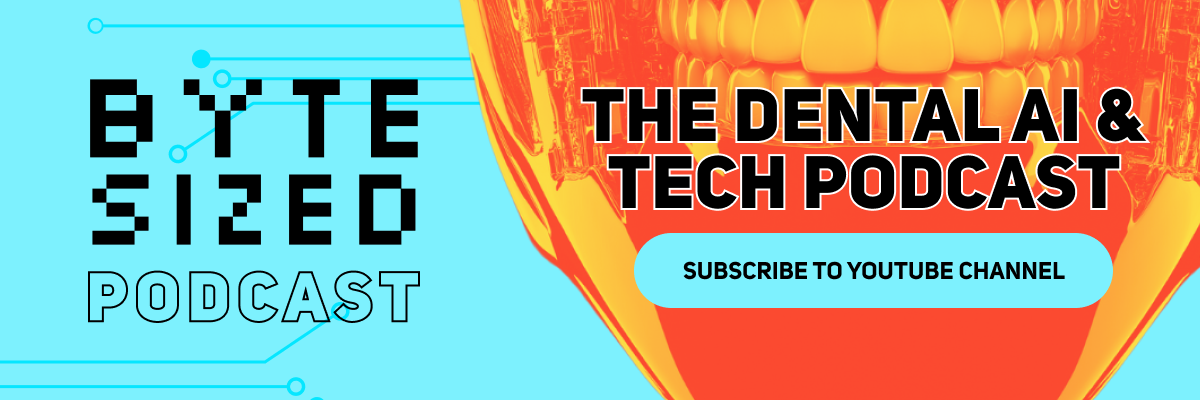
Generative Engine Optmization for Dentists: Why You Need to Start Thinking About Google AI Mode and GEO
Remember when getting your dental website to the top of Google’s search results felt like winning the SEO lottery? Well, welcome to the AI frontier, where the rules just changed, and your patients are finding answers before they even click a link.
Google’s new AI Mode isn’t just showing search results. Instead, it builds its own answers by pulling the best bits (aka “chunks”) from across the web. That means even if your page isn’t ranking #1, a single paragraph you wrote two years ago about “how long numbness lasts after a filling” could show up in a patient’s AI-generated search results.
This shift is called Generative Engine Optimization (GEO) and it’s the next big thing in dental marketing. In this post, we’ll break down what it is, why it matters, and how generative engine optimization for dentists can help your website start showing up in the AI-powered answers patients are already seeing.
Table of Contents
- What is Google AI Mode? (And Why Should Dentists Care?)
- From Rankings to Relevance: Why Position 1 Isn’t the Only Goal Anymore
- Generative Engine Optimization for Dentists
- Real-World Examples for Dental Practices
- How Dentists Can Optimize for AI Mode Right Now
- Be the Answer, Not Just Another Link
- FAQ
What Is Google AI Mode? (And Why Should Dentists Care?)
Google AI Mode is like an information curator. Instead of just listing websites in response to a search like “best dentist near me,” AI Mode goes further. It gathers pieces of information from across the internet and crafts its own answer.
Because these summaries are, well, summaries, AI mode doesn’t pull entire web pages. It grabs specific snippets, or what search marketers call “chunks” or “passages.” That means your content doesn’t need to dominate the whole search results page to be seen, it just needs to be the best little answer to one very specific question.
So, whether it’s a paragraph from your blog on how to calm dental anxiety or a clear explanation on your homepage about the difference between crowns and veneers, any of it could be selected as part of a patient’s AI-assisted search result.
That means Generative Engine Optimization for dentists is more important now than ever.
From Rankings to Relevance: Why Position 1 Isn’t the Only Goal Anymore
In the old days of SEO (so…last year), your main goal was to get your dental website on the first page of Google. Ideally, up to that that shiny #1 spot. But now, that top ranking (while still very shiny) isn’t quite as valuable as it once was.
Thanks to AI Mode, Google no longer needs to show your entire web page to help answer a patient’s question. It just needs a really good passage, whether that’s one paragraph, one sentence, or even one bullet point that directly hits the nail on the head.
Let’s say someone types, “How long does a dental crown last?” Google’s AI might not pull from the top-ranked dental website. Instead, it could surface a short, helpful snippet from a blog post you wrote two years ago that explains it clearly. For dentists, that means you need to be the best at answering very specific patient questions, quickly and clearly.
Generative Engine Optimization for Dentists
So what exactly is Generative Engine Optimization for dentists and how does it apply to your dental practice? Think of GEO as the next evolution of SEO, but instead of optimizing your whole website to rank high in search results, you’re now optimizing specific pieces of content to be included in AI-generated answers.
Every bit of your digital content—from your service pages to your FAQs, blog posts, and even your Google Business Profile—can be mined by Google’s AI Mode. If it finds a clear, helpful snippet that answers part of a searcher’s question, it might pull your content into its AI response. That’s the digital equivalent of your practice being personally recommended in a conversation happening before the patient ever clicks on anything.
This is where micro-answer optimization comes into play. Instead of writing long, general pages, focus on creating concise, specific, high-quality answers to common dental questions. For example:
- “How long does teeth whitening last?”
- “What foods should I avoid after getting a filling?”
- “Is it safe to visit the dentist during pregnancy?”
When your content nails those answers, even briefly, it earns the chance to be included in AI-powered results. This marks a huge shift in dental SEO. You don’t have to outrank the big corporate dental chains, you just have to write something better than them.
Real-World Examples for Dental Practices
What does Generative Engine Optimization for dentists look like? Basically, you need to answer the questions your patients are already Googling.
Here’s how it might play out in practice:
Example 1: The Post-Filling Numbness Paragraph
You write a quick dental blog post titled “What to Expect After a Dental Filling.” Somewhere in that article, you include this sentence:
“Most patients stop feeling numb about 2–3 hours after a dental filling, but it can take longer depending on the type of anesthetic used.”
That one sentence is concise, accurate, and helpful. Google AI Mode might lift it directly into an AI-generated summary for someone searching, “how long does dental numbness last?” Boom—your practice just became part of the answer.
Example 2: The Gum Disease FAQ
Your services page includes a short FAQ:
Q: Can gum disease go away on its own?
A: “No. While early gingivitis can be reversed with good oral hygiene, gum disease won’t heal without professional treatment.”
Clear, direct, and informative. That’s the kind of content Google loves to include in AI responses when a user searches, “Can gum disease be cured without a dentist?”
Example 3: The Google Business Profile Win
You update your Google Business Profile with a brief description of services like:
“We specialize in family dental care, emergency visits, and same-day crowns using CEREC technology.”
Now someone searches, “same-day crown dentist near me,” and guess what shows up in the AI Mode answer? Your clinic, because you’ve clearly included that info in the right place.
How Dentists Can Optimize for AI Mode Right Now
So how do you start getting your dental website content into these AI-powered search results? Good news: you don’t need to overhaul your entire site. You just need to be strategic about how you create and structure your content.
Here are five simple GEO moves you can make today:
1. Write Like You’re Answering a Patient’s Question
Each page or blog post should include clear, concise answers to common dental questions. Think:
- “How much does a dental implant cost?”
- “What age should kids first see the dentist?”
- Use natural, conversational language, just like you’d use chairside.
2. Use Subheadings and Bullet Points
AI loves structure. Breaking your content into clearly labeled sections helps machines (and humans) find exactly what they need.
For example:
What to Expect After Teeth Whitening
- Mild sensitivity for 24–48 hours
- Avoid coffee, red wine, or dark foods
- Use a sensitivity-reducing toothpaste
3. Be Specific and Self-Contained
Each snippet of content should be able to stand on its own. Avoid vague statements. Instead of “We offer a variety of treatments,” say:
“We provide dental crowns, root canals, Invisalign, and emergency services all under one roof.”
4. Keep Your Content Fresh
Regularly update service pages, blogs, and FAQs. If Google’s AI is choosing between a 2018 article and your 2025 blog post, guess which one it’s more likely to trust?
5. Don’t Forget Local SEO
GEO and local search work hand-in-hand. Keep your Google Business Profile updated with accurate info, current photos, and relevant dental keywords like “family dentist in [your city]” or “emergency dental care near [neighborhood].”
These small tweaks help Google include your practice in AI-generated answers and map packs.
Be the Answer, Not Just Another Link
The way patients search for dental care is changing fast, and so is the way Google (and other AI tools) deliver answers. Traditional dental SEO isn’t dead, but it’s evolving. If you want your dental practice to stay visible, competitive, and trusted, you need to think beyond rankings.
With Google’s AI Mode and Generative Engine Optimization for dentists, your content can dominate dental SEO and GEO by answering questions real patients are asking.
Frequently Asked Questions
What is GEO in dental marketing, and how is it different from traditional SEO?
GEO stands for Generative Engine Optimization, and it’s the next evolution of SEO. Traditional SEO focused on getting your dental website to rank on Google’s first page. GEO focuses on getting small pieces of your content—like a sentence or paragraph—included in AI-generated answers that Google and other search tools now create.
Instead of optimizing just for rankings, GEO helps your dental practice be part of the answer when a patient asks, “How long does a dental crown last?” or “What’s the best way to relieve a toothache?”
How can my dental website be featured in Google’s AI answers?
To be featured in Google AI Mode, your content needs to be clear, specific, and helpful. AI doesn’t just pull from the top search results, but from any content that best answers a patient’s question.
To optimize your dental website:
- Use FAQ sections and concise blog content
- Focus on one idea per paragraph
- Structure your pages with headings and bullet points
- Regularly update your content to keep it accurate and relevant
Even a short answer from your site can be used in AI-generated responses if it’s written well.
Is GEO only for big dental chains or can small practices benefit too?
GEO is a huge opportunity for small and local dental practices. AI search tools care more about quality and clarity than brand size. That means a well-written paragraph on your practice’s blog or a detailed answer on your Google Business Profile can outrank a national brand if it answers the right question better. In fact, smaller practices that focus on local relevance and patient education often have an edge because their content feels more personal and trustworthy. This means Generative Engine Optimization for dentists levels the playing field in favor of quality content!
About the Author: Megan Nielsen is an SEO strategist and the Grand Overlord of copywriting at My Social Practice. My Social Practice is a dental marketing company that offers a full suite of dental marketing services to thousands of dental practices throughout the United States and Canada.
![[Byte Sized Podcast Ep. 23] Frictionless Online Dental Scheduling: Why Your Practice Needs It Now Feat. Colin Ambler - generative engine optimization for dentists - My Social Practice - Social Media Marketing for Dental & Dental Specialty Practices online dental scheduling](https://mysocialpractice.com/wp-content/uploads/2025/12/byte-sized_ep23.png)






![[Byte Sized Podcast Ep. 23] Frictionless Online Dental Scheduling: Why Your Practice Needs It Now Feat. Colin Ambler - generative engine optimization for dentists - My Social Practice - Social Media Marketing for Dental & Dental Specialty Practices online dental scheduling](https://mysocialpractice.com/wp-content/uploads/2025/12/byte-sized_ep23-100x100.png)



